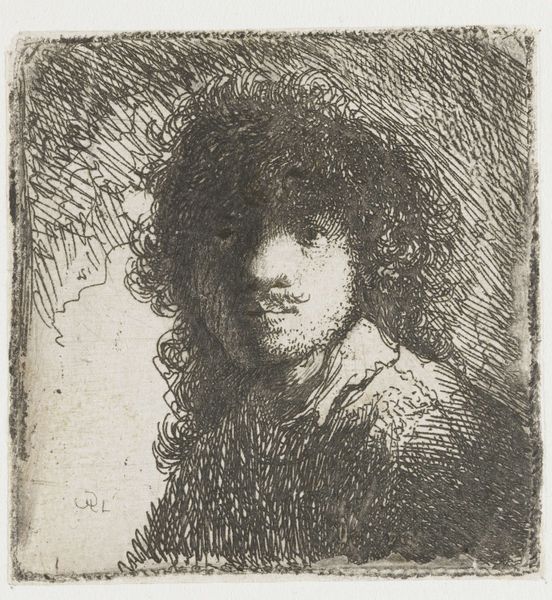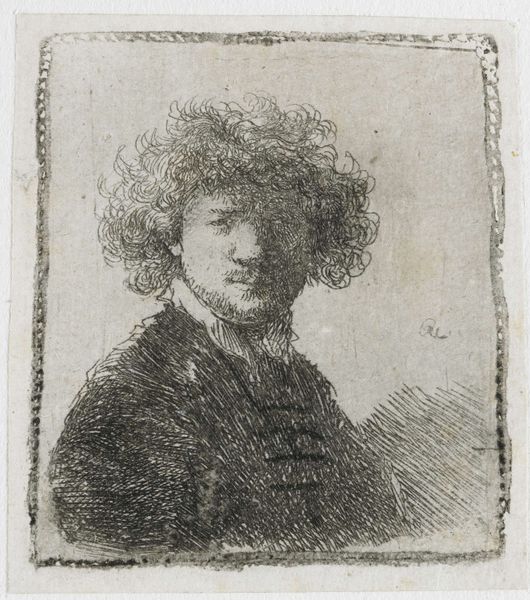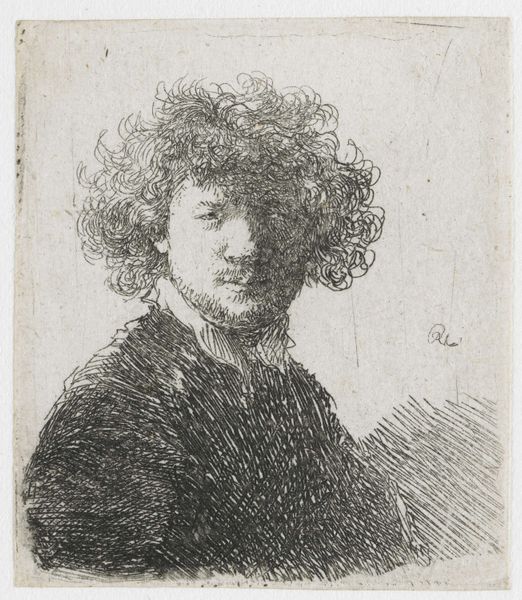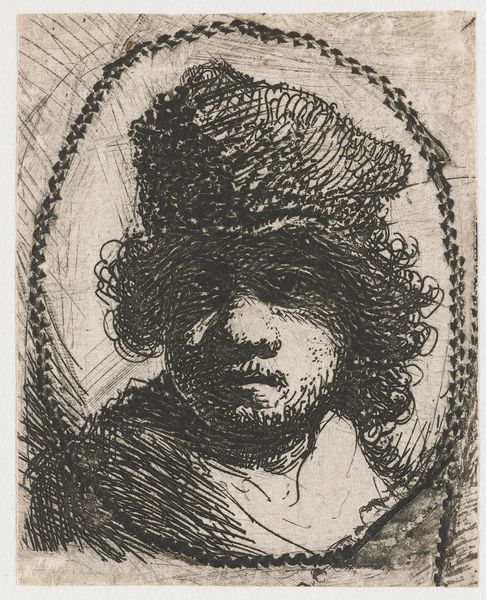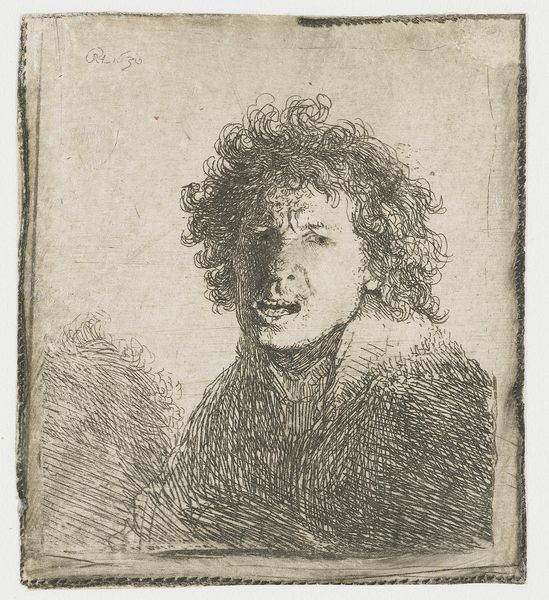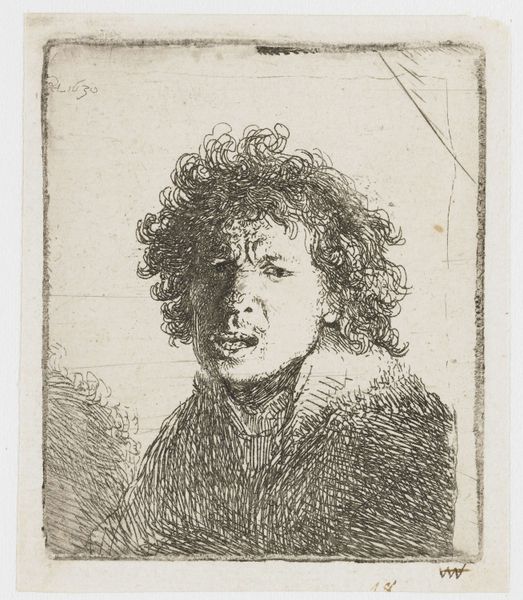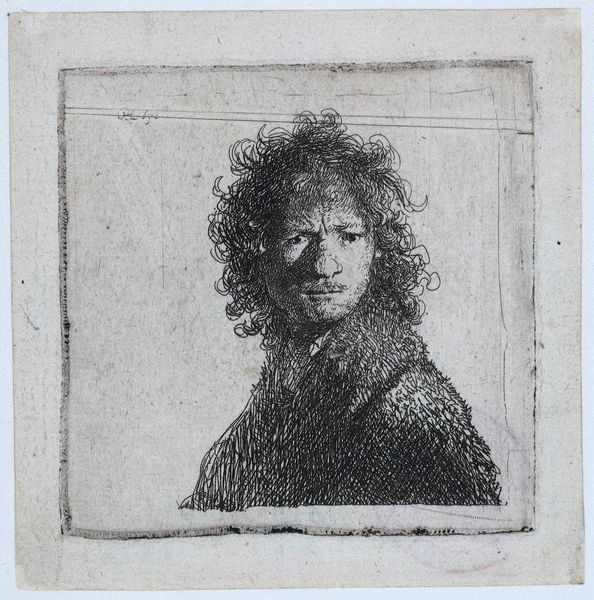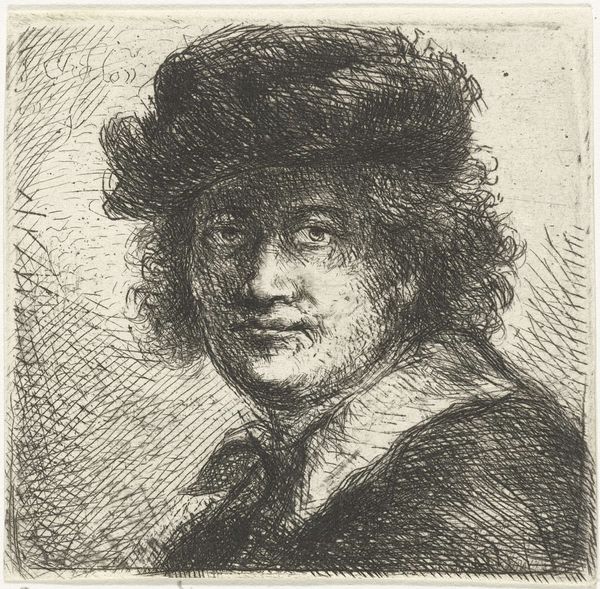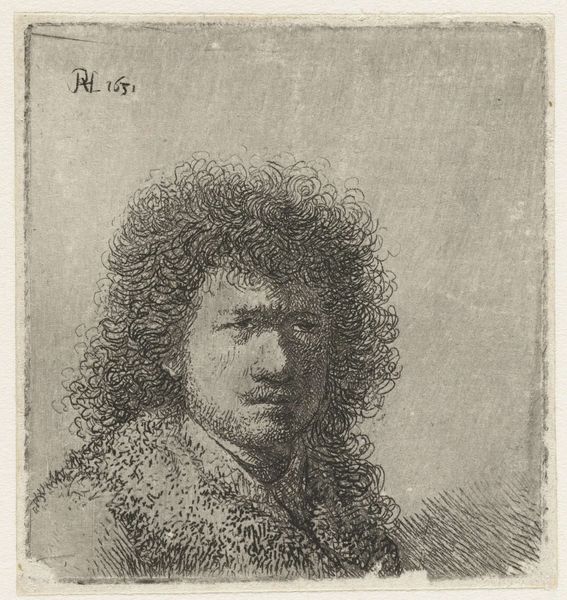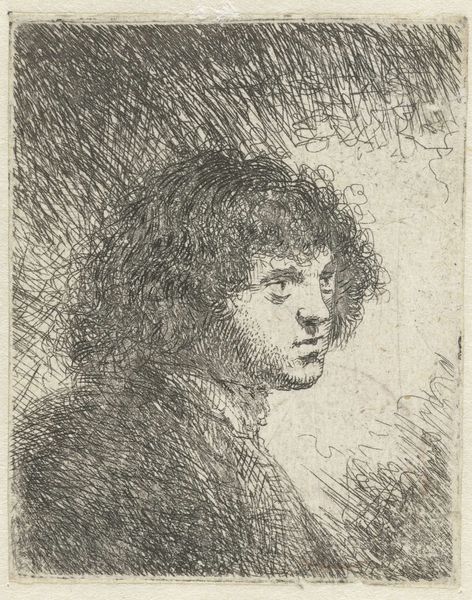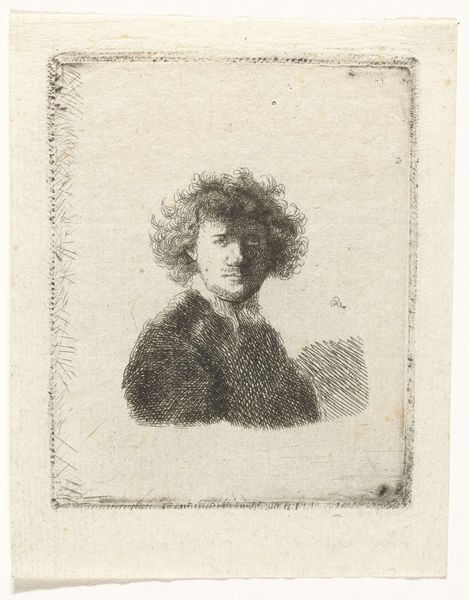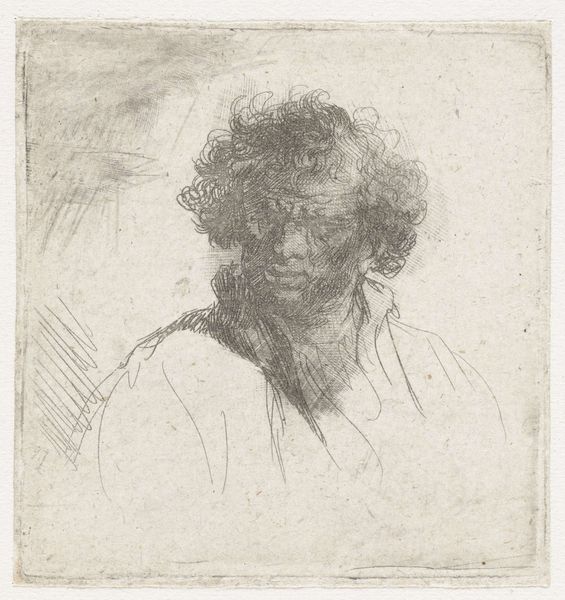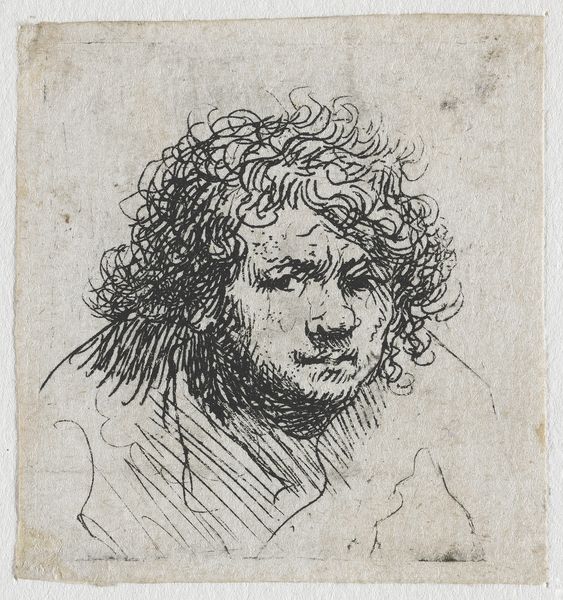
drawing, etching, intaglio
#
portrait
#
drawing
#
self-portrait
#
baroque
#
dutch-golden-age
#
etching
#
intaglio
#
pencil drawing
Dimensions: height 67 mm, width 65 mm
Copyright: Rijks Museum: Open Domain
Curator: Here we have Rembrandt van Rijn’s “Self-portrait Bare-headed,” dating from around 1629, held at the Rijksmuseum. It's a remarkable example of his early work. Editor: Immediately striking! There's this tremendous contrast...almost stark. The rough strokes and intense shading—you can practically feel the burr on the copper. Curator: Absolutely. This piece reveals Rembrandt's developing interest in capturing human emotion and psychology through the use of light and shadow—something that would come to define the Dutch Golden Age portrait. Consider how such self-portraits were tools of social promotion for aspiring artists. Editor: Right, and that promotion happened through mastery of the craft itself. Think of the biting of the acid, the controlled scratching--it's such direct labor. You can almost see the plate wearing away with each impression, subtly shifting, and influencing how people see this emerging artist. Curator: The work embodies the theatricality present in much of Dutch Golden Age art, yet also conveys intimacy through its subject, Rembrandt himself. How would it function as propaganda in the broader artistic landscape? Editor: Interesting tension there! But it still comes down to his hands manipulating materials. What type of mordant he used for etching, for example, would profoundly alter the lines and quality. It's less about grandiose politics here but more about that artist in control and manipulating his trade. Curator: His skillful manipulation of etching techniques established him within artistic circles but, you are right, also showcases technical mastery, setting standards for generations. What do we make, finally, of its influence? Editor: What I'm taking away is Rembrandt as a meticulous laborer. To me, he reveals the intimate dance between material, process, and, ultimately, artistic creation. Curator: For me, it's seeing his construction of public identity. His legacy endures.
Comments
rijksmuseum about 2 years ago
⋮
After Rembrandt painted a highly unusual self-portrait with his face in shadow around 1628 (elsewhere in this gallery), he tried out the same approach in his etchings. This proved to be no easy task. Initially the details in shadow could hardly be recognized. He succeeded only with a renewed attempt in 1633 (middle).
Join the conversation
Join millions of artists and users on Artera today and experience the ultimate creative platform.
